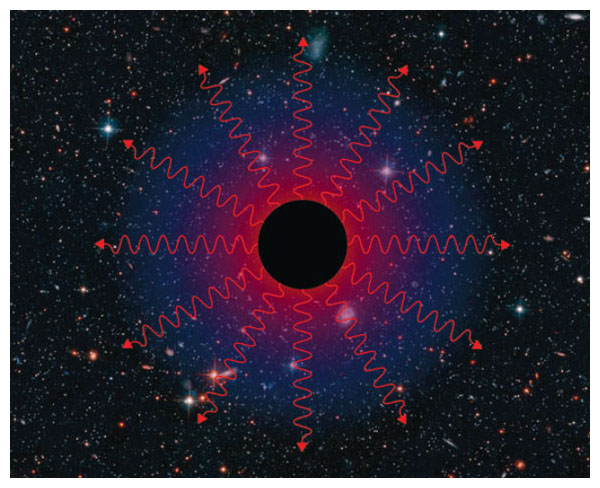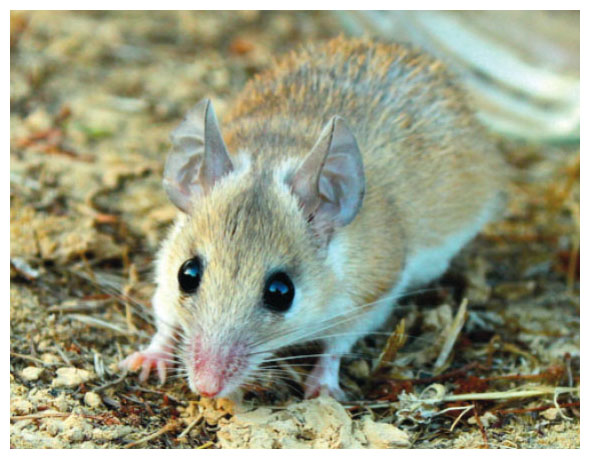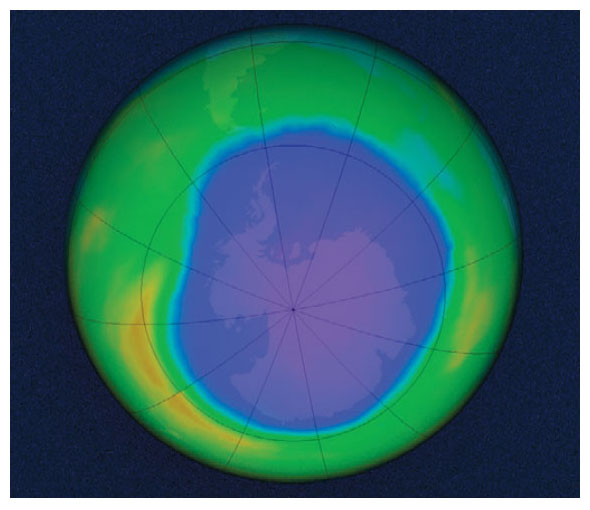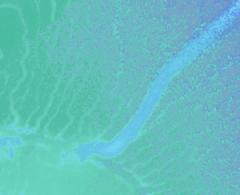
This Article From Issue
September-October 2016
Volume 104, Number 5
Page 268
DOI: 10.1511/2016.122.268
In this roundup, digital features editor Katie L. Burke summarizes notable recent developments in scientific research, selected from reports compiled in the free electronic newsletter Sigma Xi SmartBrief. Online: https://www.smartbrief.com/sigmaxi/index.jsp
Black Hole Paradox Solved?
Mathematical work led by physicist Stephen Hawking proposes a solution to a theoretical mystery called the black hole information paradox. Black holes are thought to suck in everything around them, including all information about objects that fall into them. In the 1970s Hawking showed that black holes emit radiation, later termed Hawking radiation, eventually causing the black hole to evaporate and disappear along with information it has consumed. That contradicts the standard laws of quantum physics, which state that information cannot be destroyed. Now Hawking and two coauthors propose that quantum excitations called soft hairs ( below) surround the black hole and retain some of this information. The team originally posted this idea to the preprint site arXiv in January, where it was met with skepticism. After reworking some math, Hawking’s team demonstrated even stronger evidence for the soft hairs’ existence and published a peer-reviewed paper.

Hawking, S. W., M. J. Perry, and A. Strominger. Soft hair on black holes. Physical Review Letters 116:231301 (June 6)
Four-Qubit Physics Simulation
For the first time, physicists have completed a simulation—in this case, of the formation of particles and their antiparticles—on a quantum computer. Such computers make use of objects that can be in multiple states at once, encoding information in qubits, rather than the conventional on/off state of bits. Quantum computers thus have the potential to work on many computations at once. The physicists ran their simulation on an already developed quantum computer in which four ions, each encoding a qubit, are trapped in an electromagnetic field in a vacuum. When the ions’ magnetic orientations were manipulated, they performed the logic operations of a computer calculation. This proof-of-concept quantum computer still cannot handle simulations that are currently too large for existing supercomputers. Because the ions were situated in a row, however, the design may be difficult to scale up. Next steps may be to use two-dimensional configurations of the ions, and to develop new algorithms. Nevertheless, the current work validates longstanding hopes that a quantum approach will allow a deeper exploration of fundamental physics.
Martinez, E. A., et al. Real-time dynamics of lattice gauge theories with a few-qubit quantum computer. Nature 534:516–519 (June 23)
Menstruating Mouse Discovered
Researchers have discovered that the spiny mouse (Acomys cahirinus, below) menstruates at a temporal cycle similar to humans, making it a plausible model for studying women’s reproductive health. Mouse models have not been used to study menstruation because most rodents do not have periods. More research is needed to determine if the spiny mouse is indeed a good model. The mice spend 20 to 40 percent of their nine-day menstrual cycle bleeding, a ratio comparable to women’s periods. The team from Monash University in Australia, who discovered the mouse’s menstruation, is studying its uterine physiology and has sequenced its transcriptome to compare its gene expression and hormone regulation with regard to menstruation to those of humans.

Bellofiore, N., et al. First evidence of a menstruating rodent: The spiny mouse ( Acomys cahirinus ). bioRxiv doi:10.1101/056895 (June 3)
Synthetic Genome Project Plan
An ambitious and pioneering plan to synthesize genomes has been met with a call for ethical and regulatory scrutiny. The plan to synthesize human and other genomes was drawn up by 130 scientists, entrepreneurs, and policy makers. Originally criticized for meeting behind closed doors, 24 members of the group published the plan in Science. It will start by synthesizing 1 percent of the human genome and then inserting those sequences into human cells grown in the lab. The authors say that the project will advance many fields; for instance, synthetic genomes could offer more control over tissues grown in the lab for organ transplants. They also say it will promote technology development and drive down the cost of synthesizing DNA. Still, the paper has been criticized for failing to frame ethical questions that are in need of public scrutiny before such a project is undertaken. The U.S. National Institutes of Health currently is unwilling to fund it, but a private software company, Autodesk, has pledged $250,000. The team plans to continue to seek funding while organizing working groups.
Boeke, J. D., et al. The genome project-write. Science 353:126–127 (July 8)
Ozone Hole on the Mend
Environmental policies enacted in the 1980s after the Antarctic ozone hole was detected are paying off, as it appears to be shrinking. Chemicals called chlorofluorocarbons, once common in refrigerants, spray cans, and foams, were found to damage an atmospheric layer that protects life on Earth from ultraviolet radiation and were thus phased out. Spring in Antarctica (September to Novermber) is when conditions are especially conducive to ozone hole expansion. In this study, satellite and weather balloon data were used to monitor the ozone hole from 2000 to 2015. Comparing the month of September across years indicates that the hole has shrunk by roughly 4.5 million square kilometers over that period. The time when the size of the hole peaks every year in October, however, exhibited larger variation. The hole’s shrinking is not linear because of other factors that affect ozone, especially volcanic eruptions. Despite progress, the study predicts that the ozone hole will still be around until 2050 and, depending on volcanic activity, perhaps longer.

Solomon, S., et al. Emergence of healing in the Antarctic ozone layer. Science 353:269–274 (Published online June 30)

American Scientist Comments and Discussion
To discuss our articles or comment on them, please share them and tag American Scientist on social media platforms. Here are links to our profiles on Twitter, Facebook, and LinkedIn.
If we re-share your post, we will moderate comments/discussion following our comments policy.